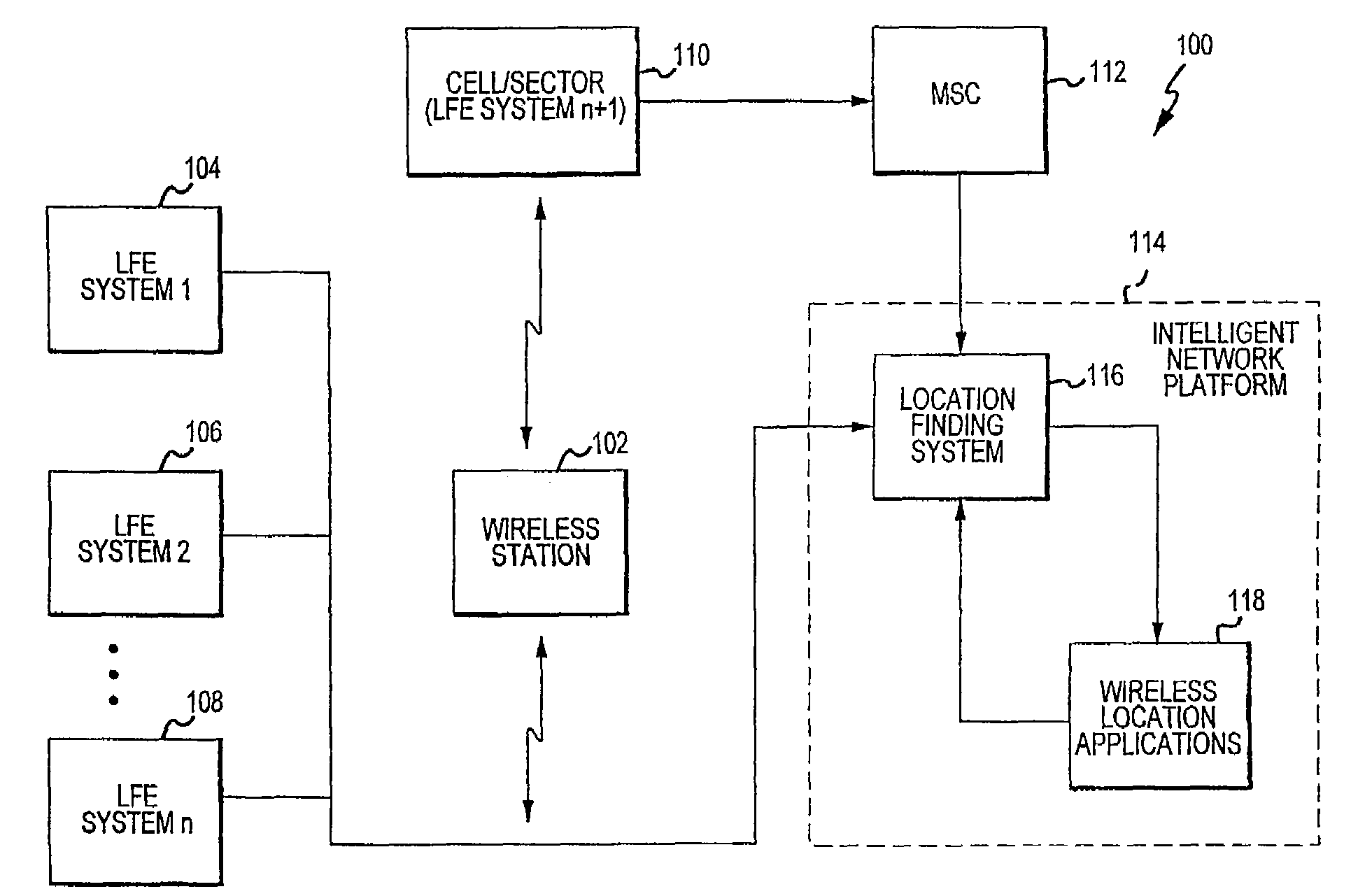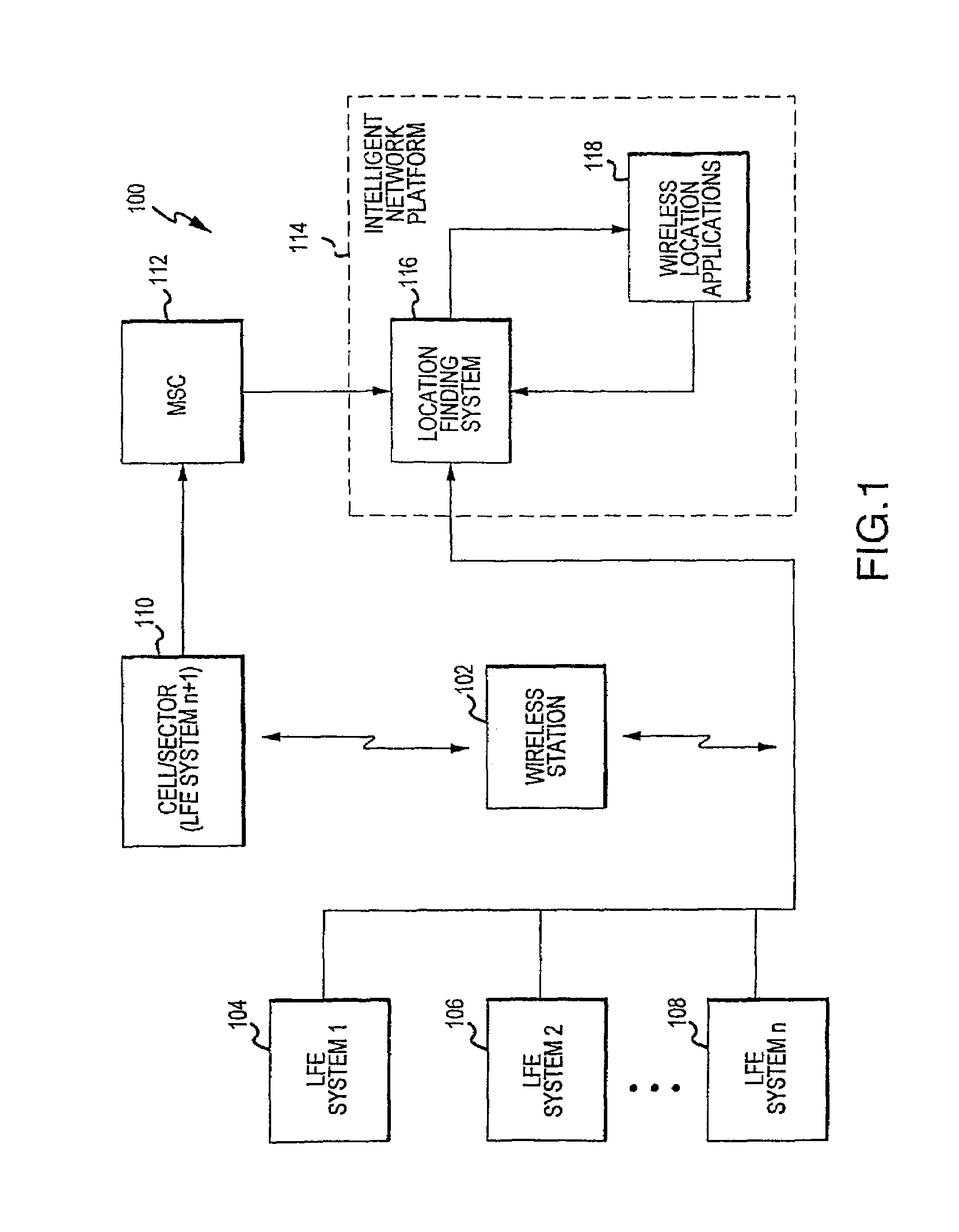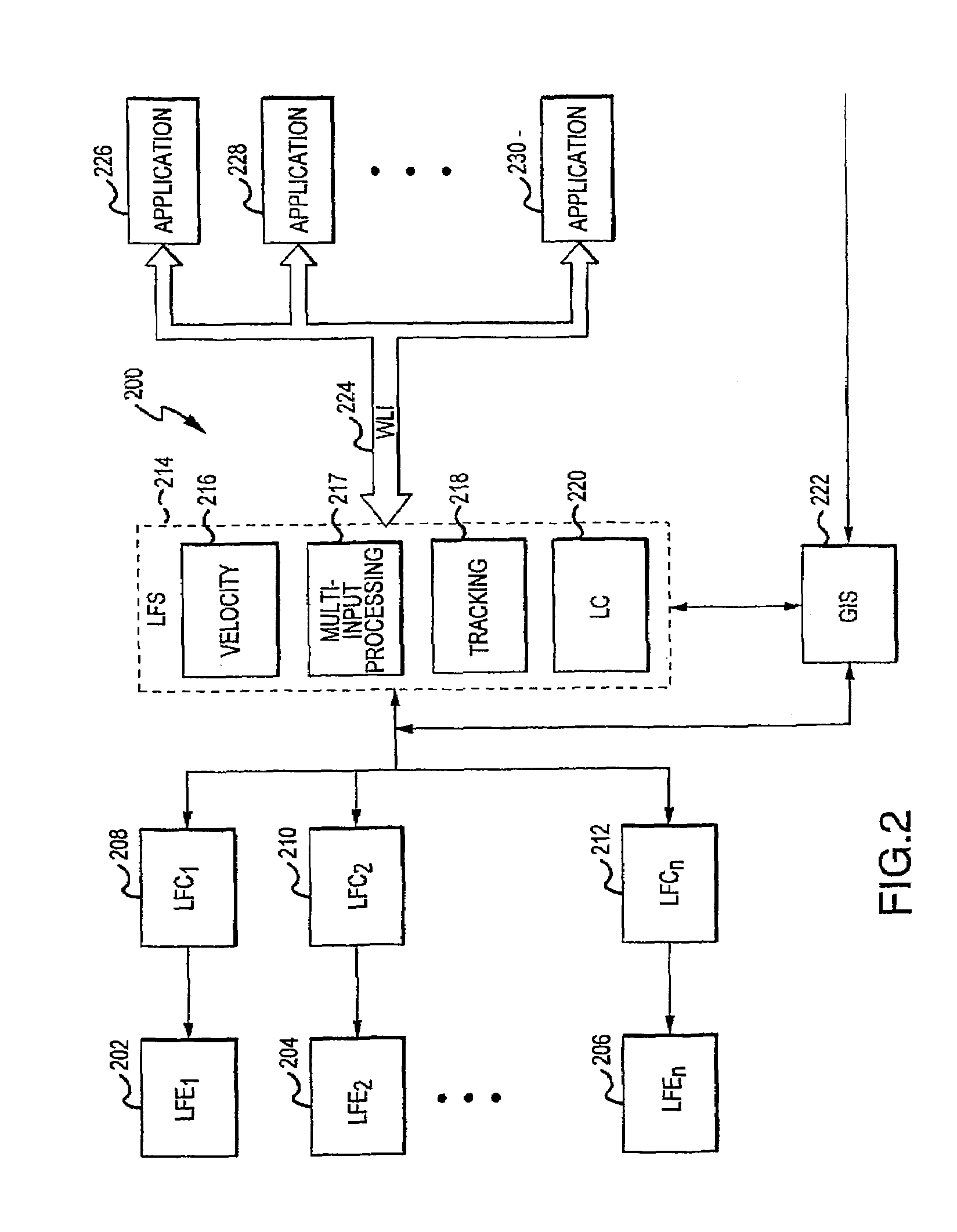Interface for wireless location information
a wireless location and information technology, applied in the field of wireless location information interface, can solve the problems of best use and the inability to disable applications designed to work with a particular lfe, and achieve the effects of enhancing the timeliness, accuracy and/or reliability of requested location information, and being convenient to deploy
- Summary
- Abstract
- Description
- Claims
- Application Information
AI Technical Summary
Benefits of technology
Problems solved by technology
Method used
Image
Examples
Embodiment Construction
[0022]In the following description, particular embodiments and implementations of the present invention are set forth in the context of a telecommunications network. It will be appreciated however, that various aspects of the invention are more broadly applicable to other location based services environments.
[0023]Referring to FIG. 1, a wireless telecommunications network implementing the present invention is generally identified by the reference numeral 100. Generally, the network includes a mobile switching center (MSC) 112 for use in routing wireless communications to or from wireless stations 102, a network platform 114 associated with the MSC 112 for implementing a variety of subscriber or network service functions, and a variety of location finding equipment (LFE) systems 104, 106, 108 and 110. In the illustrated embodiment, the network platform is used to run a Location Manager (LM) 16 in accordance with the present invention and a number of wireless location applications 118...
PUM
 Login to View More
Login to View More Abstract
Description
Claims
Application Information
 Login to View More
Login to View More - R&D
- Intellectual Property
- Life Sciences
- Materials
- Tech Scout
- Unparalleled Data Quality
- Higher Quality Content
- 60% Fewer Hallucinations
Browse by: Latest US Patents, China's latest patents, Technical Efficacy Thesaurus, Application Domain, Technology Topic, Popular Technical Reports.
© 2025 PatSnap. All rights reserved.Legal|Privacy policy|Modern Slavery Act Transparency Statement|Sitemap|About US| Contact US: help@patsnap.com



